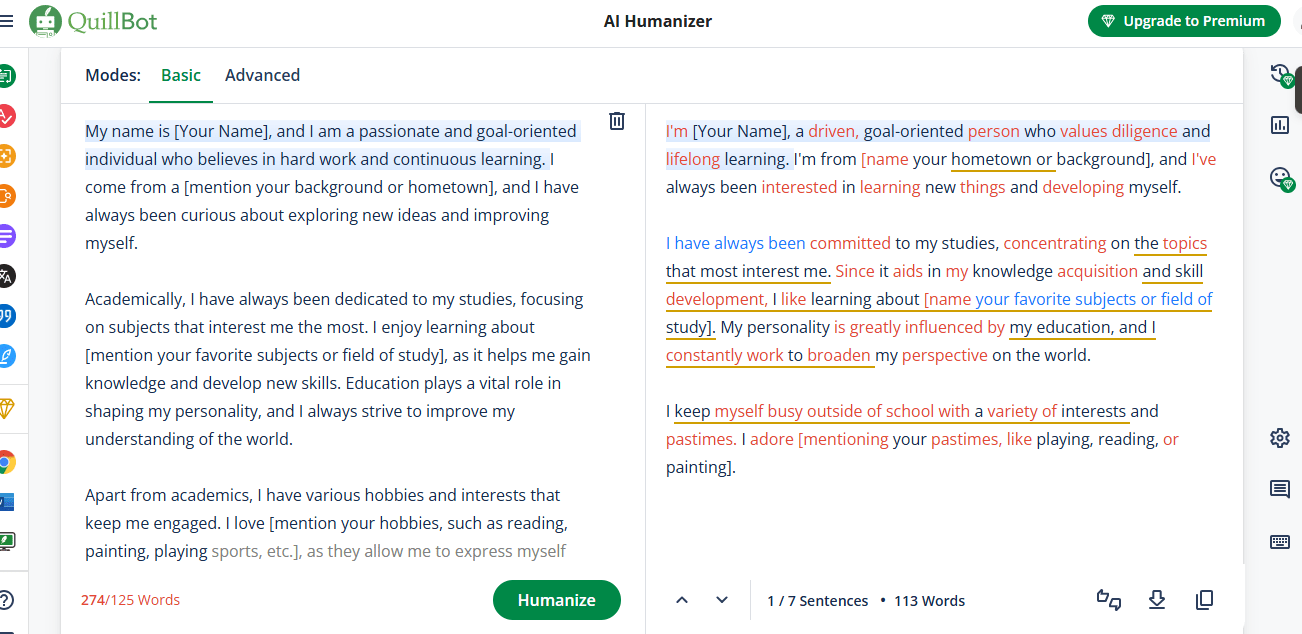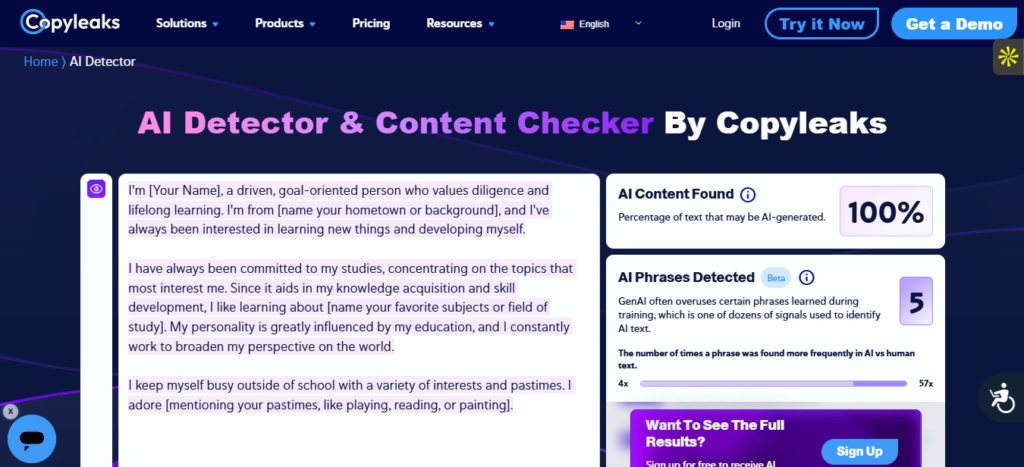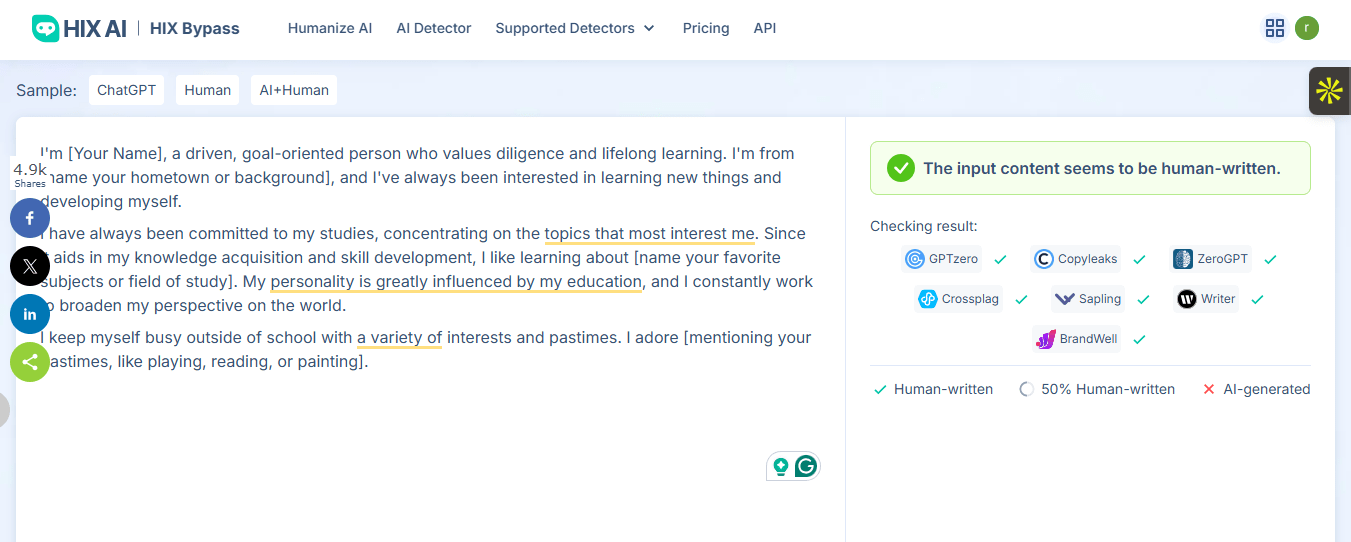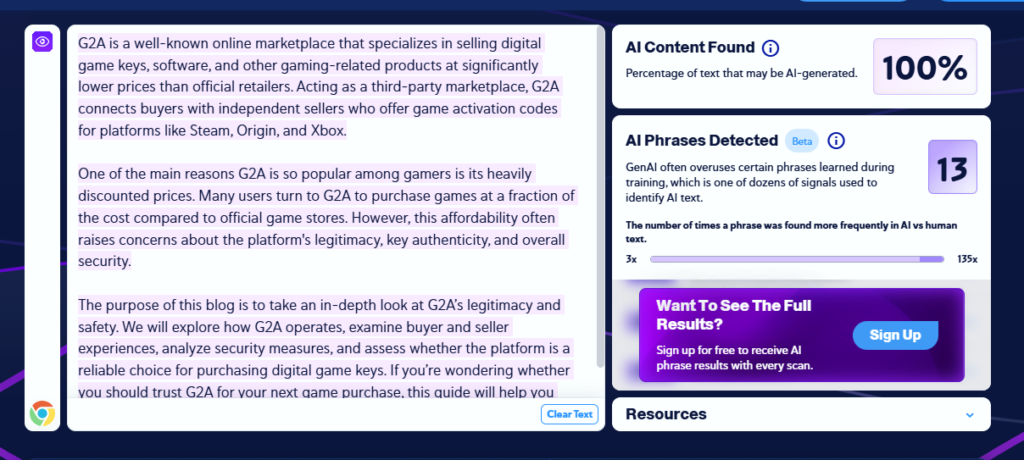In today’s digital landscape, where academic integrity and originality are paramount, many writers and students turn to tools that can assist in content creation. One such tool is QuillBot, a popular paraphrasing tool that allows users to rewrite text in various ways. However, a pressing question emerges: is QuillBot detectable by plagiarism checkers? This article will explore the functionality of QuillBot, the science behind plagiarism detection, and provide a comparative analysis of both to arrive at a conclusion.
Understanding QuillBot and Its Functionality
The Basics of QuillBot
QuillBot is designed to help users refine their writing by offering paraphrasing options that enhance clarity and coherence. With its user-friendly interface, anyone can input text, and the platform will generate rewritten versions, allowing for improved expression and style.

Utilizing advanced natural language processing algorithms, QuillBot aims to maintain the original meaning of the text while altering its structure. It offers several modes, such as Standard, Fluency, and Creative, each allowing different styles of paraphrasing tailored to the user’s needs. This versatility makes QuillBot an invaluable tool for students, professionals, and anyone looking to enhance their writing skills or produce content that resonates with their audience.
In addition to its core paraphrasing capabilities, QuillBot also provides features like a built-in grammar checker and a summarizer, which can further aid users in refining their work. The grammar checker ensures that the text is not only paraphrased but also free from common errors, while the summarizer condenses lengthy articles or papers into concise overviews, saving users time and effort.
How QuillBot Works
At its core, QuillBot leverages artificial intelligence (AI) to analyze the input text, break it down into components, and regenerate it in a new form. The process begins with the software determining the context and semantics of the original content.
Once the analysis is complete, QuillBot employs various techniques like synonym replacement, sentence restructuring, and rephrasing to create an alternative version of the text. Users can then edit and adjust the results to suit their preferences, giving them full control over the final output. This interactive process not only empowers users to refine their writing but also encourages them to engage more deeply with their content, fostering a better understanding of language and style.
Moreover, QuillBot’s machine learning capabilities allow it to continuously improve its algorithms based on user feedback and interactions. As more users engage with the platform, QuillBot learns to recognize patterns in writing styles and preferences, which enhances its ability to deliver increasingly accurate and relevant paraphrased content. This ongoing evolution ensures that QuillBot remains a cutting-edge tool for anyone looking to elevate their writing experience.
The Science Behind Plagiarism Checkers
The Role of Plagiarism Checkers
Plagiarism checkers serve an essential function in the realm of academia, writing, and publishing by identifying instances of copied content. These tools are crucial for maintaining academic standards and ensuring originality in submissions. In an age where information is readily accessible, the temptation to borrow ideas without proper attribution is ever-present. Consequently, plagiarism checkers not only protect the integrity of academic work but also foster a culture of honesty and respect for intellectual property.

Plagiarism detection usually involves comparing submitted texts against extensive databases containing books, articles, and online content. When a match is identified, the checker alerts the user, providing them an opportunity to rectify the issue before submission. This proactive approach is particularly beneficial for students and researchers who may inadvertently incorporate uncredited material into their work. Moreover, many institutions now require the use of plagiarism checkers as part of their submission guidelines, further emphasizing their importance in upholding ethical writing practices.
The Mechanism of Plagiarism Detection By QuillBot and Other Tools
Most plagiarism checkers utilize complex algorithms that can identify not only direct copying but also paraphrased content. They analyze the text for patterns and structures that correlate with entries in their databases. This process often includes breaking down sentences into smaller components, allowing the software to detect similarities in phrasing and sentence structure that might not be immediately obvious to the human eye. Such meticulous analysis ensures a higher accuracy rate in identifying potential plagiarism.
Some advanced systems even evaluate semantic similarities, which means the checker can recognize instances where ideas have been rephrased but not originally created. This nuanced approach raises questions about the effectiveness of paraphrasing tools like QuillBot in circumventing detection mechanisms.
As these technologies evolve, so too do the strategies employed by writers to maintain originality. The ongoing arms race between plagiarism detection software and content creation tools highlights the necessity for writers to develop a deeper understanding of proper citation practices and the ethical implications of their work.
Additionally, as educational institutions increasingly emphasize the importance of academic integrity, the role of plagiarism checkers is likely to expand, incorporating even more sophisticated technologies to adapt to the ever-changing landscape of writing and research.
QuillBot and Plagiarism Checkers: A Comparative Analysis
QuillBot’s Paraphrasing Algorithm
QuillBot’s paraphrasing algorithm is designed to generate text that retains the original meaning while transforming its structure. This capability can potentially complicate plagiarism detection, as the rewritten content may appear unique at first glance. The algorithm employs a range of techniques, including synonym replacement, sentence restructuring, and contextual understanding, to create variations of the input text that are both coherent and contextually relevant.

However, despite the tool’s effectiveness, highly sophisticated plagiarism checkers may still recognize certain patterns or phrases that remain unchanged. This leads to an ongoing debate about whether using a paraphrasing tool can genuinely guarantee originality. Critics argue that while QuillBot can produce text that seems fresh, it may inadvertently perpetuate ideas or phrases that are too close to the original source, thus failing to achieve true originality. This raises important questions for students and professionals alike about the ethical implications of relying on such tools for academic or creative writing.
Plagiarism Checker’s Detection Algorithm
Detection algorithms in plagiarism checkers have become significantly advanced, incorporating machine learning to improve their accuracy over time. These algorithms analyze vast amounts of data and can discern subtle differences between original writing and paraphrased content. By utilizing natural language processing (NLP), these systems can understand context and intent, allowing them to identify not just identical phrases but also similar ideas expressed in different ways.
Moreover, many plagiarism detection systems are continually updated to keep pace with new content available online. They employ various techniques, including fingerprinting documents and semantic analysis, to ensure that even when ideas are altered, similarities can still be flagged. As a result, users of paraphrasing tools like QuillBot must remain vigilant, as the line between acceptable paraphrasing and plagiarism can be thin. Furthermore, the growing reliance on digital content has prompted educational institutions to adopt stricter policies regarding originality, making it essential for writers to understand the nuances of both paraphrasing and plagiarism detection to navigate this complex landscape effectively.
The Verdict: Can Plagiarism Checkers Detect QuillBot?
Factors Influencing Detection
Multiple factors come into play when determining whether a plagiarism checker can identify text generated by QuillBot. The extent of paraphrasing, the complexity of the original text, and the capabilities of the plagiarism detection software itself are all critical elements.
In situations where users employ QuillBot, minimally changing only a few words or phrases, the likelihood of detection is higher. Conversely, thorough paraphrasing that significantly alters the text’s structure may evade detection, especially if the algorithms of the checker are not sophisticated enough.
Additionally, the context in which the original content is used can also affect detection rates. For example, if a piece of writing is heavily reliant on common knowledge or widely accepted facts, the chances of it being flagged as plagiarized diminish. This is particularly relevant in academic settings where certain phrases or terminologies are standard within a discipline. Therefore, understanding the nuances of both the source material and the intended audience can play a pivotal role in how plagiarism checkers assess the originality of the text.
We did a comprehensive check on content generated and paraphrased by QuillBot and found that QuillBot is detectable. First, we tested the QullBot’s AI humanizer. We took dummy content generated by Chat GPT and humanized it with the help of QuillBot’s AI humanizer. Later, we did a comprehensive check using AI bypaser tool and found the content by QuillBot is still getting detected.
Here is the screenshot of content humanized by QuillBot.

Now we used Copyleaks AI detection of check if the QuillBot AI is detectable or not.

We found that Copyleaks is easily detecting that the content is still generated by AI.
Conclusion: Yes, QuillBot AI is detectable.
However, there is a glitch.
Every AI detection tool has its own algorithm to check if content is 100% generated by AI or not. In the case of Copyleaks, it uses an advanced algorithm to check if content generated or humnaized by QuillBot is detectable or not.
On the other hand, we also used the same humanized content to check on other tools like Undetectable AI and found that this tool says the content is 100% manually written.

So the answer to the question if QuillBot AI is detectable or not is not certain or direct.
Now let’s examine whether QuillBot paraphrase is detectable or not.
In this experiment, we generated content with the help of ChatGPT and used QuillBot’s paraphrase tool to rewrite the content and make it more natural. Later, we did a check on Copyleaks to see if QuillBot paraphrase is detectable or not. For those who prefer more control over their workflows, it’s also possible to run ChatGPT locally, adding another layer of flexibility to content generation and privacy.

Here is the result.

Hence, we cannot conclude a perfect answer for whether QuillBot AI is detectable or not. In some of the tools, the content generated and rephrased by QuillBot might be detected, but in some tools, it might not be.
Like discussed above, every plagiarism and AI content detection tool has its own working mechanism, which makes it difficult to find which content is human-written and which is AI-generated.
What Can Be A Way Forward?
The way forward is to use AI content only to a certain extent and not entirely depend on AI tools for content creation. If Google finds your publishing AI content at scale, your site will be deindexed. You can use AI tools to back your content with an outline, research, introduction and other parts.
Even if you are generating content with the help of AI tools then make sure you add a human touch to your content. Back your AI content with real research, case studies and add your own experience to it. This will make your content more natural and you no longer need to use any plagiarism checker or AI detection tools.
The Final Answer: Is QuillBot Detectable?
Ultimately, the answer to whether QuillBot is detectable by plagiarism checkers is not straightforward. While QuillBot offers a robust platform for rephrasing content, the effectiveness of plagiarism checkers varies widely. More sophisticated systems equipped with advanced algorithms may still identify content generated by QuillBot as non-original.
Writers and students must approach the use of tools like QuillBot with caution, recognizing the importance of crafting original content rather than relying solely on paraphrasing. The best practice remains a blend of utilizing such tools for inspiration and ensuring personal input and originality in writing. By doing so, one can maintain academic integrity while fully leveraging technological assistance.
Moreover, it’s essential to consider the ethical implications of using paraphrasing tools. While they can be incredibly helpful for generating ideas or overcoming writer’s block, over-reliance on these tools can lead to a superficial understanding of the material. Engaging deeply with the subject matter not only fosters genuine learning but also enhances the quality of the writing. Therefore, writers should view QuillBot as a supplementary resource rather than a crutch, ensuring that their unique voice and perspective shine through in their work.
How QuillBot AI helps Professionals and Students
QuillBot for Professionals

For professionals, effective communication is key to success. Quillbot streamlines the writing process, allowing users to focus on content rather than getting bogged down in language issues. Here’s how Quillbot serves professionals in various fields.
1. Enhancing Business Communication with Quillbot
Quillbot plays a vital role in enhancing communication within the business environment. Professionals can use the software to draft emails, reports, and presentations that are clear and engaging. The grammar check feature ensures that any errors are caught before sending, while the paraphrasing tool offers the ability to convey complex ideas succinctly.
Moreover, the ability to adjust the tone and style of writing through Quillbot’s various modes allows professionals to cater their communication to different audiences, ensuring that the messaging aligns with the company’s branding and communication strategy. This adaptability is particularly useful in multinational companies where cultural nuances can significantly impact how messages are received. By tailoring language and tone, professionals can foster better relationships with clients and colleagues alike, leading to more productive collaborations.
2. Streamlining Content Creation in the Professional World
In content-heavy industries, time is of the essence. Quillbot enables professionals to quickly generate high-quality content, reducing the time spent on drafting and editing. This software helps in brainstorming content ideas, thereby providing professionals with a valuable resource for articles, blogs, and marketing materials.
Furthermore, Quillbot’s tools help in creating more engaging content by suggesting alternatives that captivate readers, ultimately enhancing the effectiveness of the communication efforts. The integration of SEO-friendly suggestions also allows content creators to optimize their work for search engines, ensuring that their articles reach a wider audience. In an age where digital presence is paramount, utilizing Quillbot can give professionals a competitive edge by not only saving time but also enhancing the visibility and impact of their content across various platforms.
QuillBot for Students

Students also benefit significantly from the capabilities of Quillbot. With the pressures of academic writing, using Quillbot can ease some of the burdens and enhance learning outcomes. Let’s explore its role in academic success.
1. Simplifying Academic Writing with Quillbot
Academic writing often poses challenges such as the necessity for clarity and adherence to specific formatting styles. Quillbot assists students in organizing their thoughts coherently while maintaining the formal tone required in academia. It aids in drafting essays, research papers, and theses by suggesting improvements and refining arguments.
Additionally, the paraphrasing tool is especially beneficial for students working on literature reviews or analyses, allowing them to synthesize sources without falling into the trap of plagiarism. The ability to rephrase complex ideas into simpler terms can also help students grasp difficult concepts, making it easier to incorporate these insights into their own writing.
2. How QuillBot Supports Learning and Research
Quillbot empowers students not only to produce better writing but also to enhance their overall learning experience. By using the software, students can learn effective writing techniques while simultaneously improving their vocabulary and grammar skills.
This enables them to engage more critically with their subject matter, fostering a deeper understanding of their studies. Quillbot also serves as a collaborative tool, allowing students to share their writing with peers and receive constructive feedback, further enhancing the learning process. Moreover, the integration of Quillbot into study groups can lead to more dynamic discussions, as students can utilize the tool to clarify their points and articulate their thoughts more effectively, promoting a richer academic dialogue.
Furthermore, Quillbot’s summarization feature can be a game-changer for students who are overwhelmed with reading assignments. By condensing lengthy articles and research papers into digestible summaries, it allows students to focus on the key arguments and findings, saving time and improving retention. This capability not only aids in comprehension but also equips students with the skills to identify essential information, which is crucial for effective studying and exam preparation.
The Benefits of Using QuillBot

Quillbot presents a multitude of benefits that extend beyond mere writing enhancement. It is an invaluable tool for anyone looking to improve their communication skills, be it in a professional or academic capacity. Here are some of the primary advantages.
1. Time-Saving Aspects of QuillBot
Time is a precious resource, especially for busy professionals and students. Quillbot enables users to accomplish more in less time by automating parts of the writing process. With quick paraphrasing and grammar checks, individuals can focus on generating high-quality ideas rather than getting lost in the writing minutiae.
This not only increases productivity but also allows for more time to engage in research, brainstorming, and other essential activities that contribute to quality output. Additionally, the tool’s user-friendly interface means that even those who may not be tech-savvy can easily navigate its features, making it accessible to a wider audience. As a result, Quillbot serves as a bridge for those who may struggle with writing, empowering them to express their thoughts without the intimidation of complex writing mechanics.
2. Improving Writing Quality with QuillBot
The overarching benefit of Quillbot is its ability to enhance the quality of writing. By providing real-time feedback and suggesting improvements, Quillbot helps users communicate more clearly and effectively. This enhanced clarity can lead to better assessments in academic settings and more successful communications in professional environments.
As writing is a fundamental skill across various domains, the improvements gained by using Quillbot have lasting effects, positively impacting the way users express their ideas. Furthermore, the tool’s ability to adapt to different writing styles allows users to maintain their unique voice while still benefiting from its suggestions. This balance between personalization and enhancement ensures that the essence of the writer’s message remains intact, fostering confidence in their writing abilities. Whether drafting a formal report, crafting an engaging blog post, or preparing an academic paper, Quillbot proves to be a versatile ally in the writing journey.
FAQs Of QuillBot
QuillBot is an AI-powered paraphrasing tool designed to help users rewrite sentences, improve writing clarity, and avoid plagiarism. It offers multiple writing modes, grammar checking, and summarization features.
Turnitin and similar plagiarism checkers primarily detect direct plagiarism. While QuillBot rephrases text, some paraphrased content may still be flagged if the core meaning remains too similar to the original. Always review and edit the output for originality.
Using QuillBot responsibly for rewording and improving writing quality is not cheating. However, relying on it to generate content without proper citation in academic or professional settings could be considered unethical.
Yes, QuillBot is safe to use. It does not store user data or submitted text, ensuring privacy. However, always use it ethically, especially in academic and professional work.
QuillBot offers a free plan with limited paraphrasing modes and character limits. The premium plan unlocks advanced features like faster processing, more rewriting styles, and a higher character limit.
QuillBot can help improve academic writing by enhancing sentence structure and clarity. However, it should not be used to bypass plagiarism checks or submit unoriginal work.
Yes, QuillBot has a built-in plagiarism checker (available in the premium version) to ensure content originality.
Search engines like Google do not specifically target QuillBot-generated content, but low-quality or overly automated writing may affect SEO rankings. Always refine paraphrased content to maintain readability and uniqueness.
Yes, QuillBot supports multiple languages, including Spanish, French, German, and more, making it useful for non-English speakers.
Popular alternatives include Grammarly, Wordtune, and Spinbot. Each tool has unique features for rewriting and improving content.

